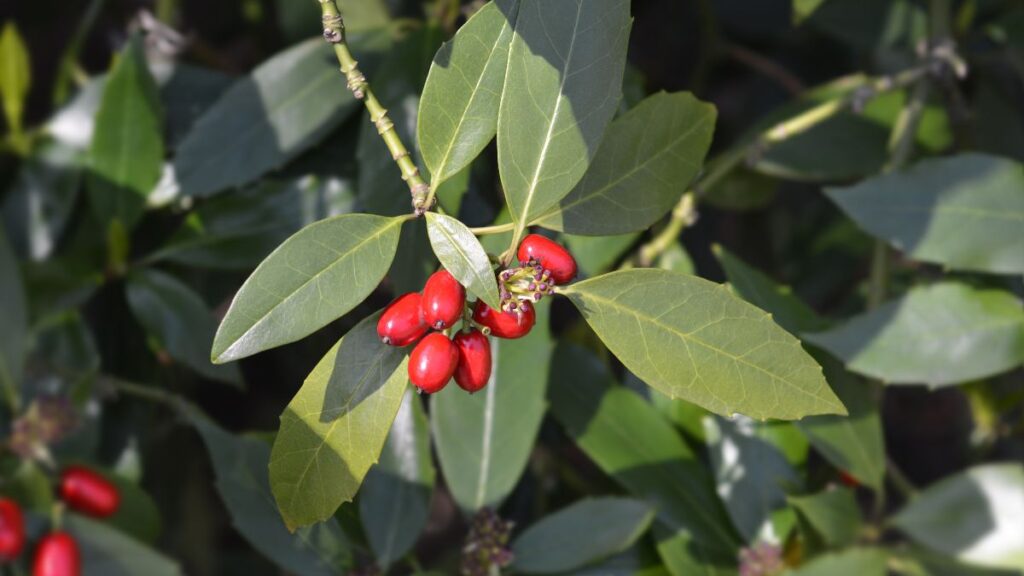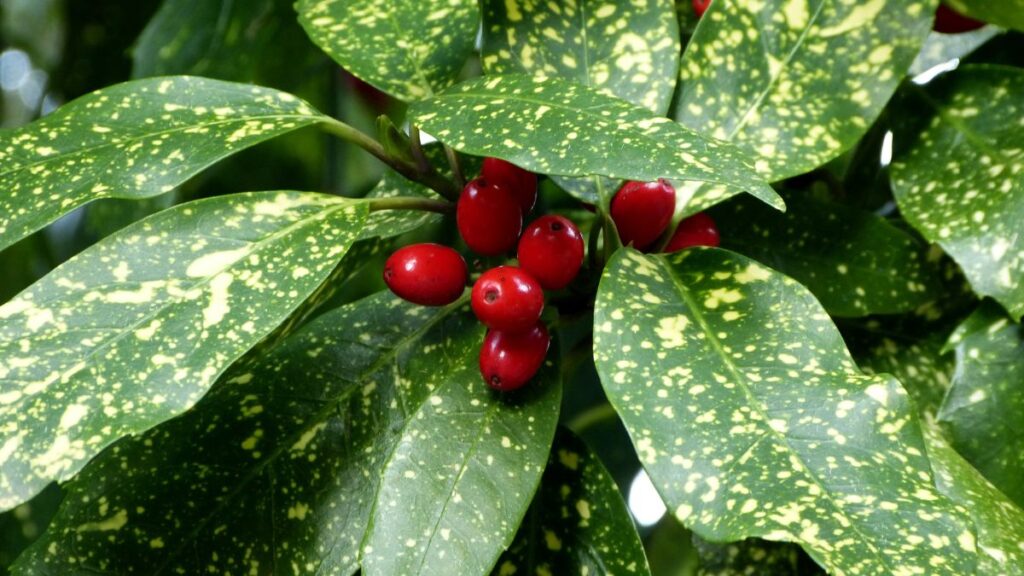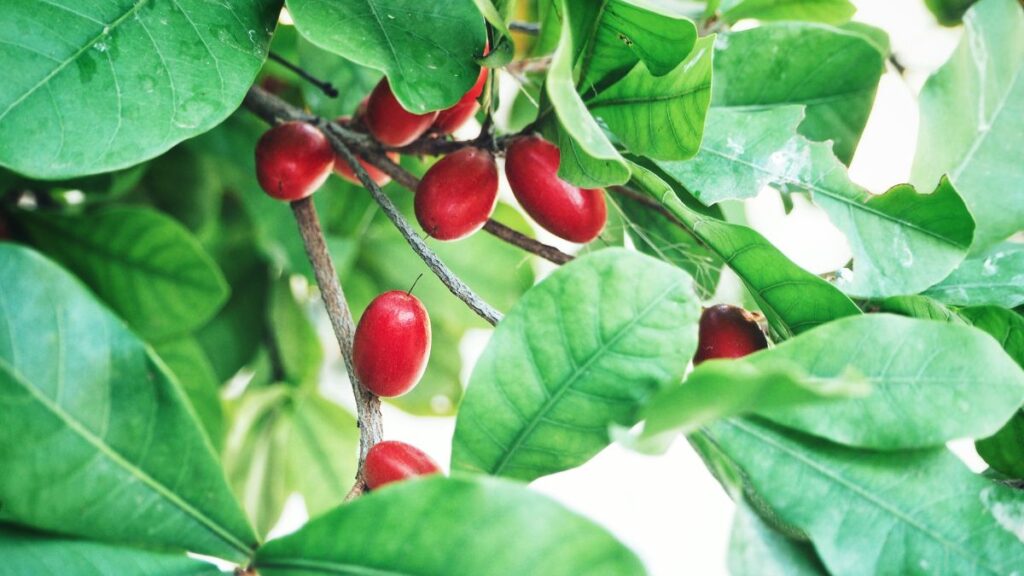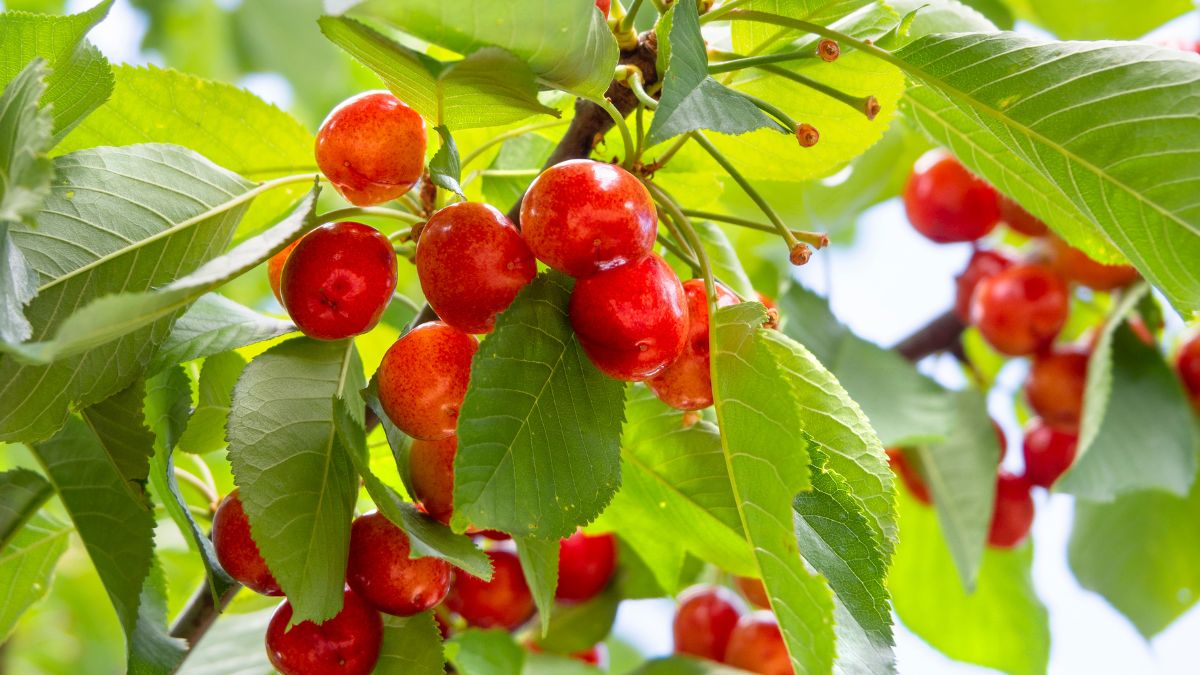Introduction
Indoor plants add a touch of greenery to our living spaces and provide numerous benefits for our health and well-being. Among the many options available, the Japanese Laurel plant is an excellent choice for those looking to bring a tropical vibe indoors.
Characteristics of the Japanese Laurel Plant
Appearance and foliage
The Japanese Laurel Plant, scientifically known as Aucuba japonica, features glossy, leathery leaves with varying gold, yellow, or cream patterns, adding an exotic flair to any room. Its dense foliage and vibrant colors make it an attractive addition to indoor spaces.

Growth habits
This evergreen shrub typically grows up to 6 feet tall indoors, making it suitable for small and large spaces. Its slow growth rate means it won’t outgrow its welcome too quickly, allowing easy maintenance.
Benefits of growing Japanese Laurel Plant indoors
Air purification
Like many indoor plants, the Japanese Laurel helps improve indoor air quality by filtering harmful toxins and pollutants. Its lush foliage absorbs pollutants such as formaldehyde, benzene, and carbon monoxide, creating a healthier environment for inhabitants.
Aesthetic enhancement
Beyond its air-purifying properties, the Japanese Laurel adds aesthetic value to indoor spaces with its striking foliage. Whether used as a focal point or a decorative arrangement, its lush leaves bring a touch of the tropics into your home.
How to care for Japanese Laurel indoors
Light requirements
Japanese Laurels thrive in bright, indirect light but tolerate low-light conditions. Place them near east or north-facing windows to provide ample sunlight without exposing them to direct sunlight, which can scorch their leaves.
Watering and humidity needs
Keep the soil moist but not waterlogged, allowing the top inch to dry out between waterings. Maintain moderate humidity levels by misting the leaves regularly or placing a humidifier nearby, especially during the dry winter.
Soil and fertilization
Use well-draining potting soil with a slightly acidic pH for optimal growth. Fertilize monthly during the growing season with a balanced liquid fertilizer to promote healthy foliage and steady growth.
Temperature considerations
Maintain temperatures between 60-75°F (15-24°C) year-round, avoiding drastic temperature fluctuations and drafts. Japanese Laurels prefer a warm, humid environment similar to their native Asian habitat.

Propagation methods
Seed propagation
While Japanese Laurels can produce berries containing seeds, propagation from seeds is a slow and challenging process. It’s often easier to propagate through stem cuttings for quicker results.
Stem cuttings
Take 4-6 inch stem cuttings from healthy, mature plants and root them in moist potting soil or water. Place the cuttings in a warm, bright location and keep the soil consistently moist until roots develop, usually within 4-6 weeks.
Common issues and troubleshooting
Pests and diseases
Watch out for common pests such as aphids, mealybugs, and spider mites, which can infest Japanese Laurels and cause damage to their foliage. Treat infestations promptly with insecticidal soap or neem oil to prevent further spread.
Leaf discoloration and dropping
Yellowing or browning of leaves can indicate overwatering, underwatering, or nutrient deficiencies. Adjust watering practices and fertilize to correct nutrient imbalances and promote healthy growth.
Pruning and shaping
Maintaining plant health
Regular pruning helps remove dead or damaged foliage, improving air circulation and preventing disease. Use sharp, clean pruning shears to make clean cuts and shape the plant as desired.
Controlling growth
Trim back long, leggy stems to encourage bushier growth and maintain the plant’s shape. Prune selectively to avoid over-pruning, which can stress the plant and inhibit growth.
Repotting guidelines
Signs for repotting
Monitor the plant for signs of root crowding, such as roots protruding from drainage holes or decreasing growth. Repot every 2-3 years or when the plant outgrows its current container to provide ample space for root growth.
Steps for repotting
Choose a slightly larger pot with good drainage and fill it with fresh potting soil. Gently loosen the plant’s roots and transfer them to the new pot, then thoroughly backfill with soil and water. Allow the plant to adjust to its new container before resuming regular care.
Creative indoor uses for Japanese Laurel
Decorative arrangements
Use Japanese Laurels as standalone specimens or incorporate them into mixed planters for added visual interest. Their vibrant foliage adds texture and color to indoor gardens, patios, and balconies.
Functional purposes
Beyond their ornamental value, Japanese Laurels can serve practical purposes indoors, such as screening or partitioning off areas for privacy. Use them as living room dividers or place them strategically to block unsightly views while enhancing the aesthetic appeal of your space.

Conclusion
In conclusion, the Easy Care Japanese Laurel plant is an excellent option for introducing a tropical feel indoors. Its lush, glossy leaves and low maintenance needs make it an ideal choice for homes or offices. Whether you’re an experienced plant lover or new to indoor gardening, this plant’s vibrant greenery and exotic charm are sure to please. Don’t wait any longer—bring some tropical vibes into your indoor space today with the Easy Care Japanese Laurel plant!
FAQs
1. Can I keep my Japanese Laurel outdoors?
While Japanese Laurels can tolerate outdoor conditions in mild climates, they prefer the controlled environment of indoor settings, where temperatures and humidity levels remain consistent.
2. How often should I fertilize my Japanese Laurel?
Fertilize your Japanese Laurel monthly during the growing season (spring and summer) with a balanced liquid fertilizer diluted to half strength to avoid overfeeding.
3. Is it normal for Japanese Laurel leaves to turn yellow?
Yellowing leaves can indicate overwatering, underwatering, nutrient deficiencies, or pests. Assess your plant’s care routine and environment to determine the cause and take appropriate action.
4. Can I prune my Japanese Laurel to control its size?
Yes, regular pruning can help control the size and shape of your Japanese Laurel. Trim back long, leggy stems to encourage bushier growth and maintain an attractive appearance.
5. How do I propagate Japanese Laurel plants?
Japanese Laurels can be propagated from stem cuttings from healthy, mature plants. Root the cuttings in moist potting soil or water, providing warmth and bright indirect light until roots develop.
